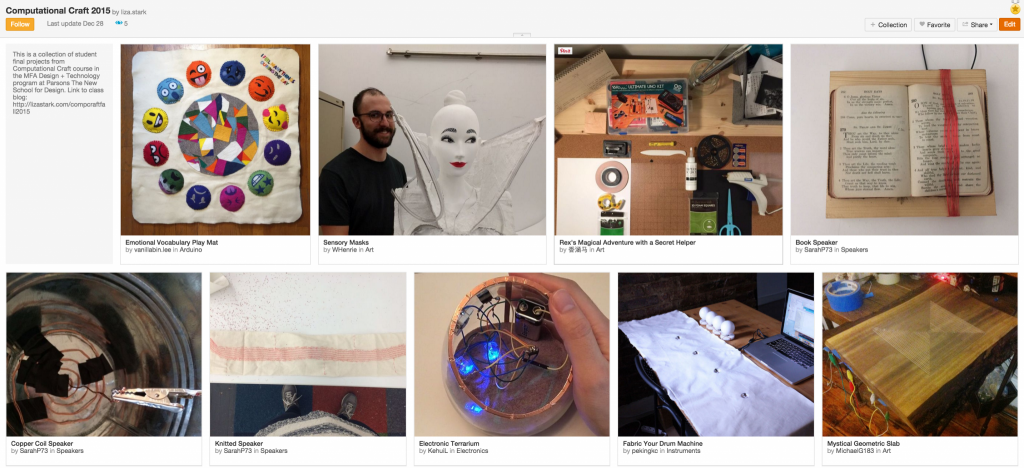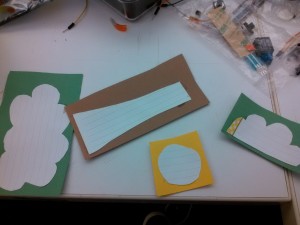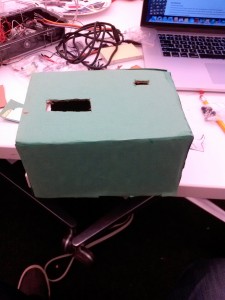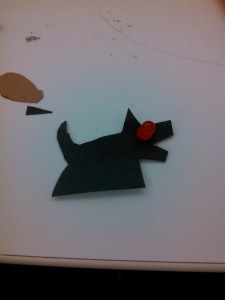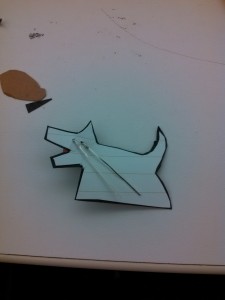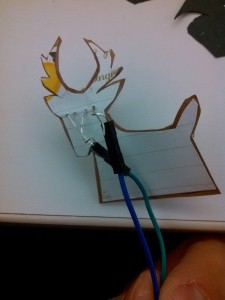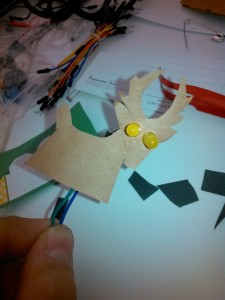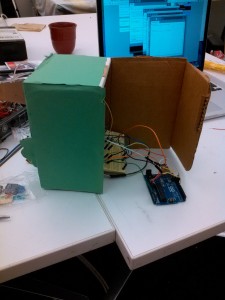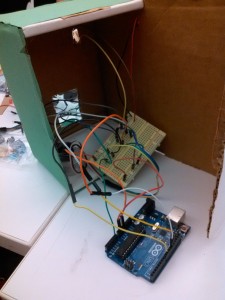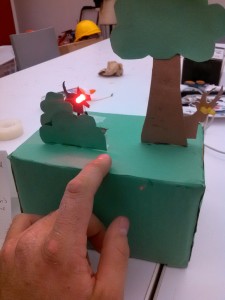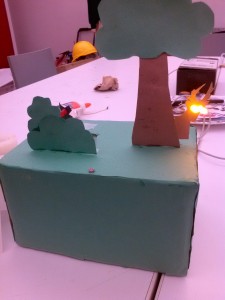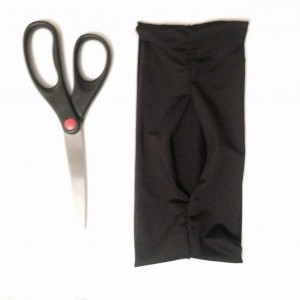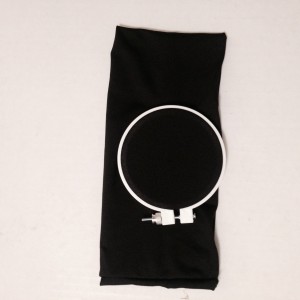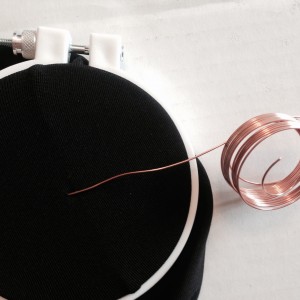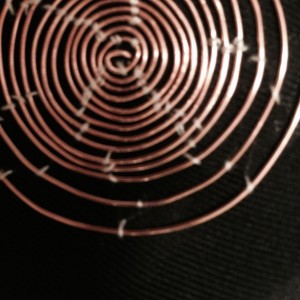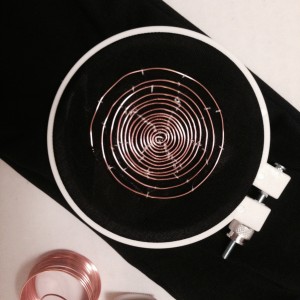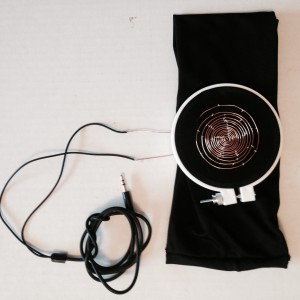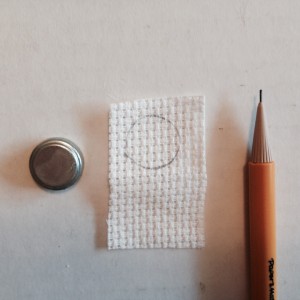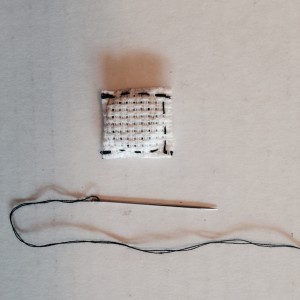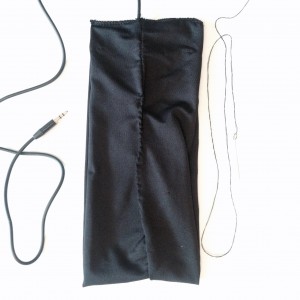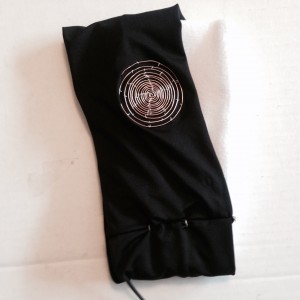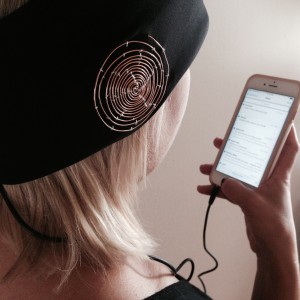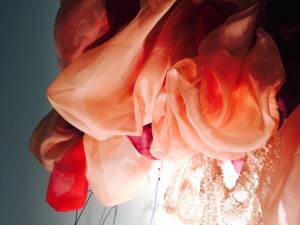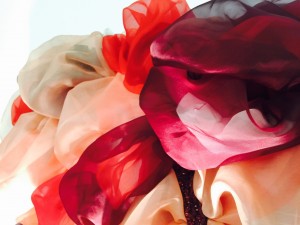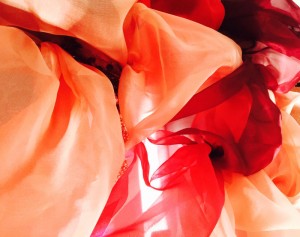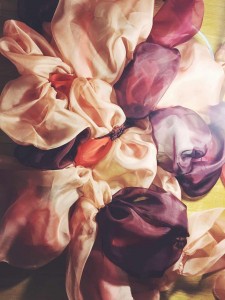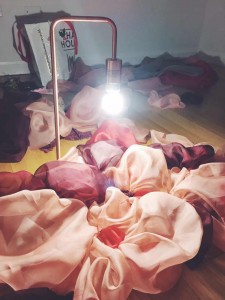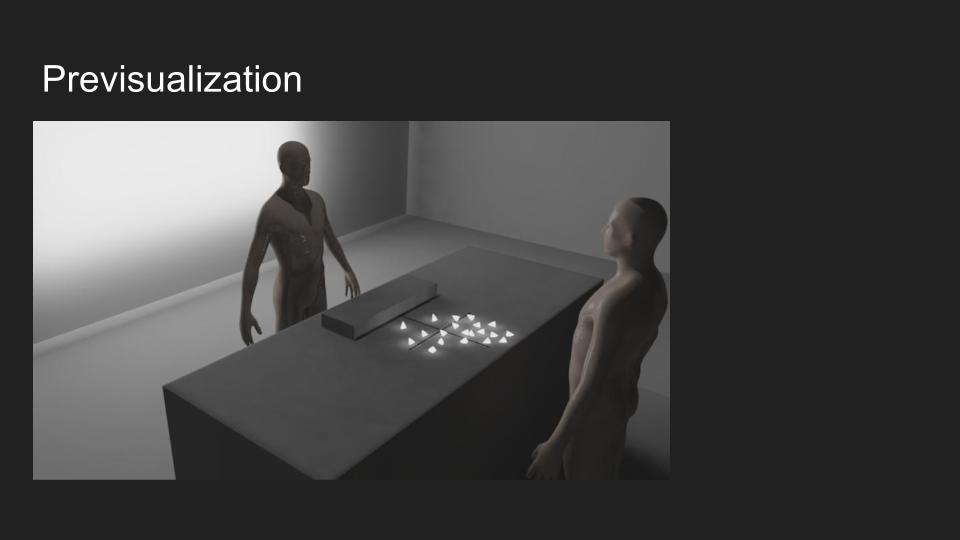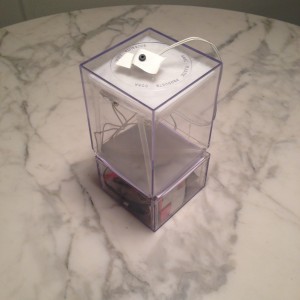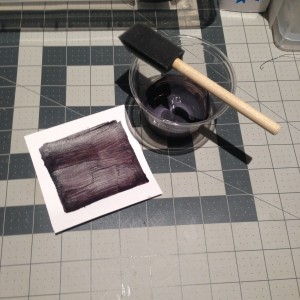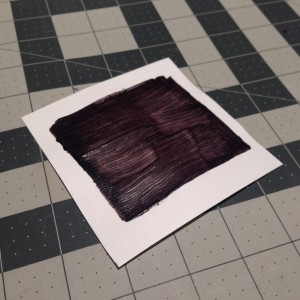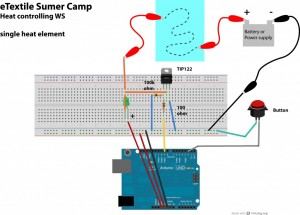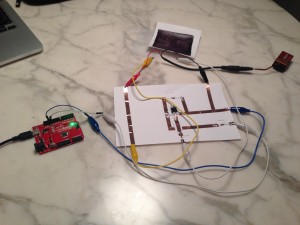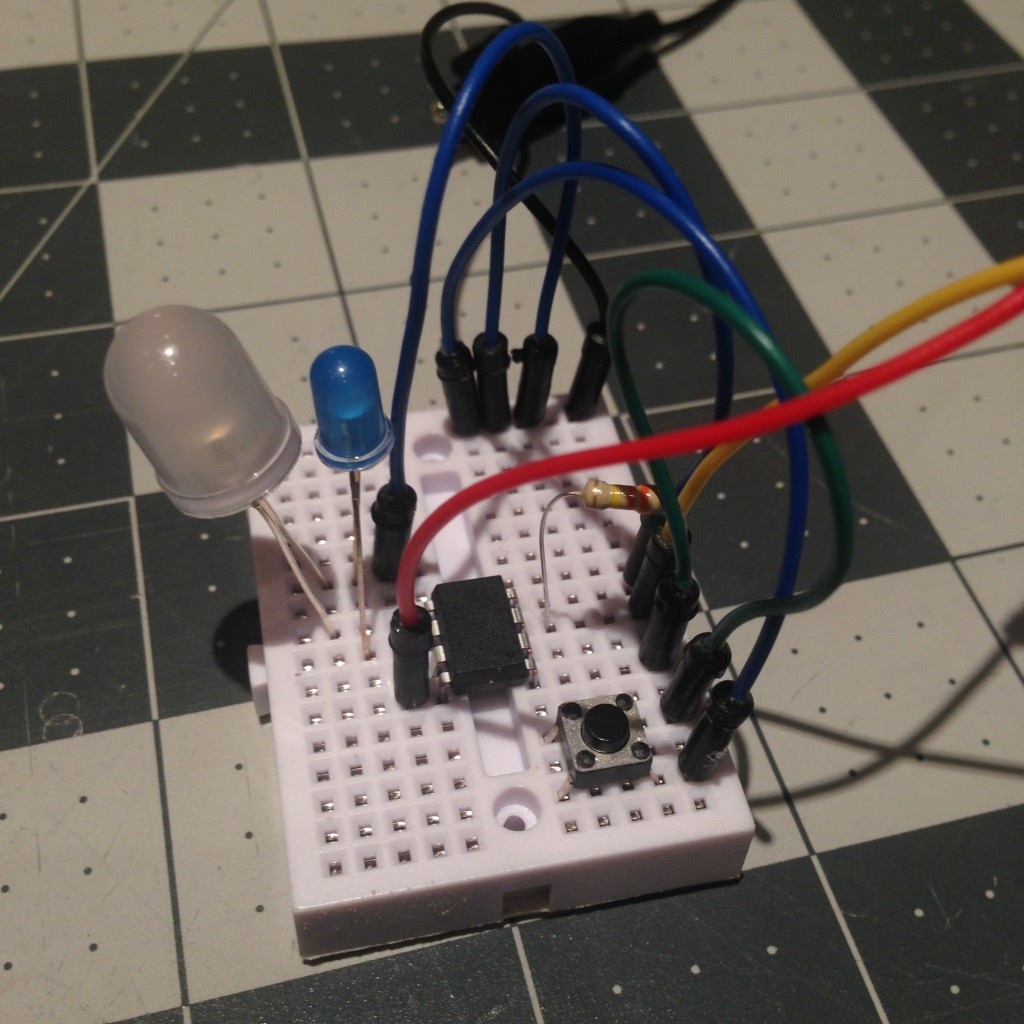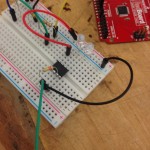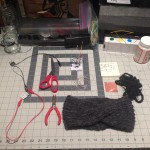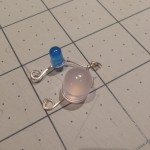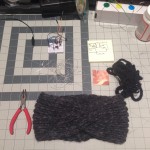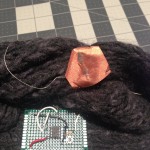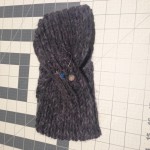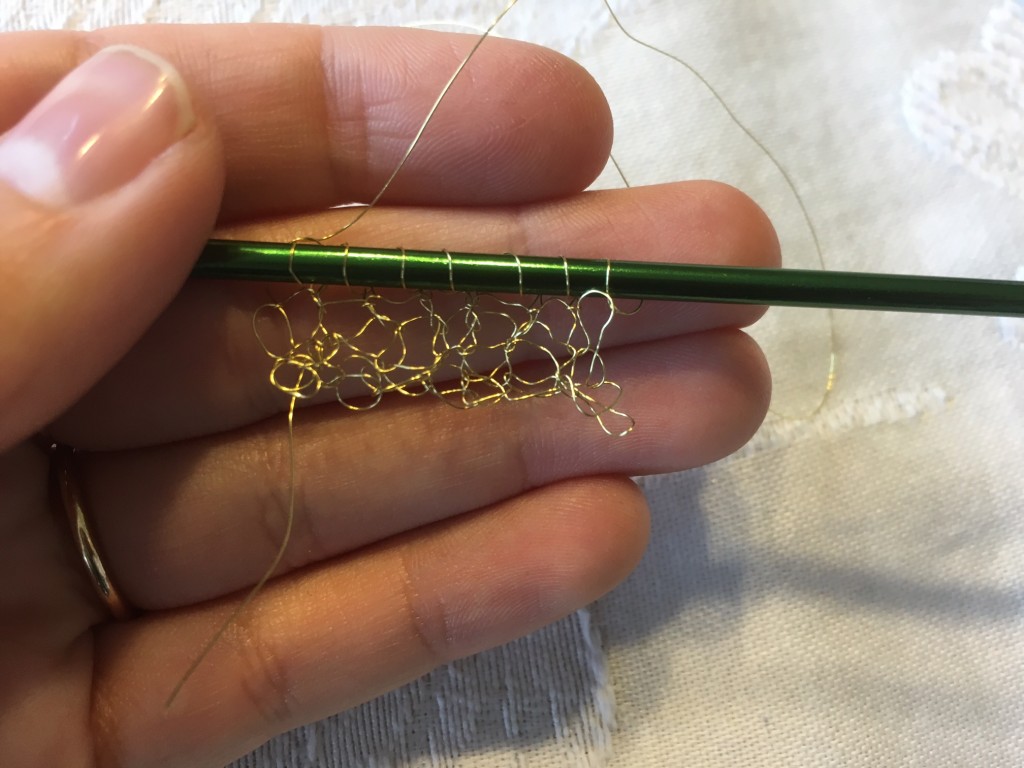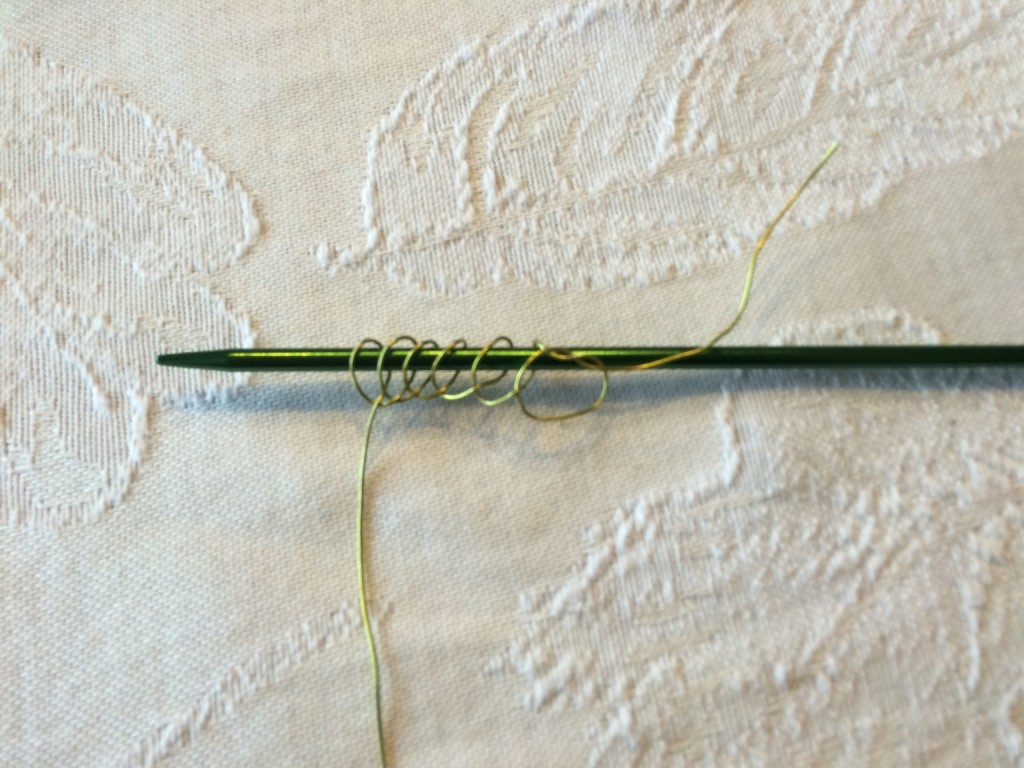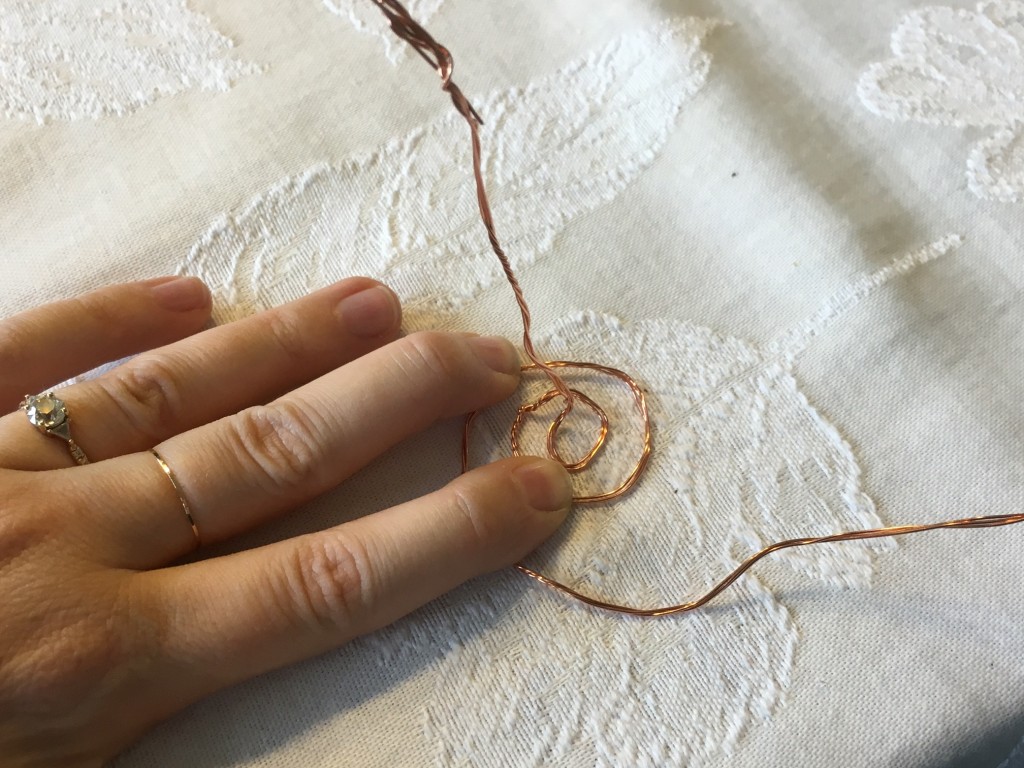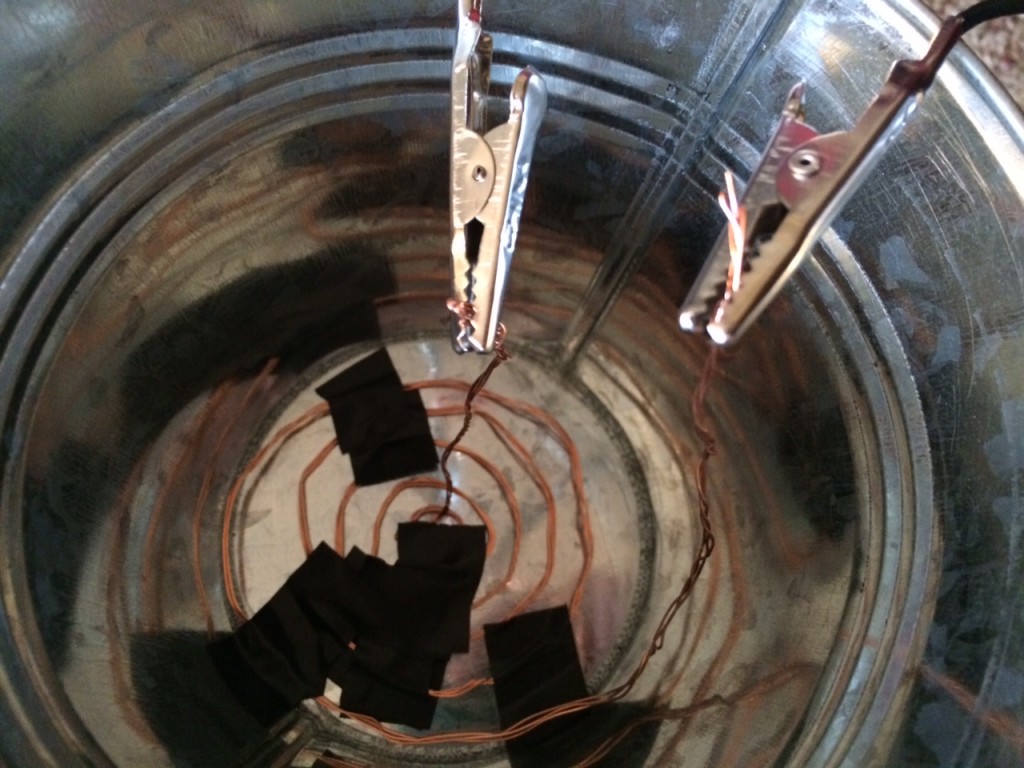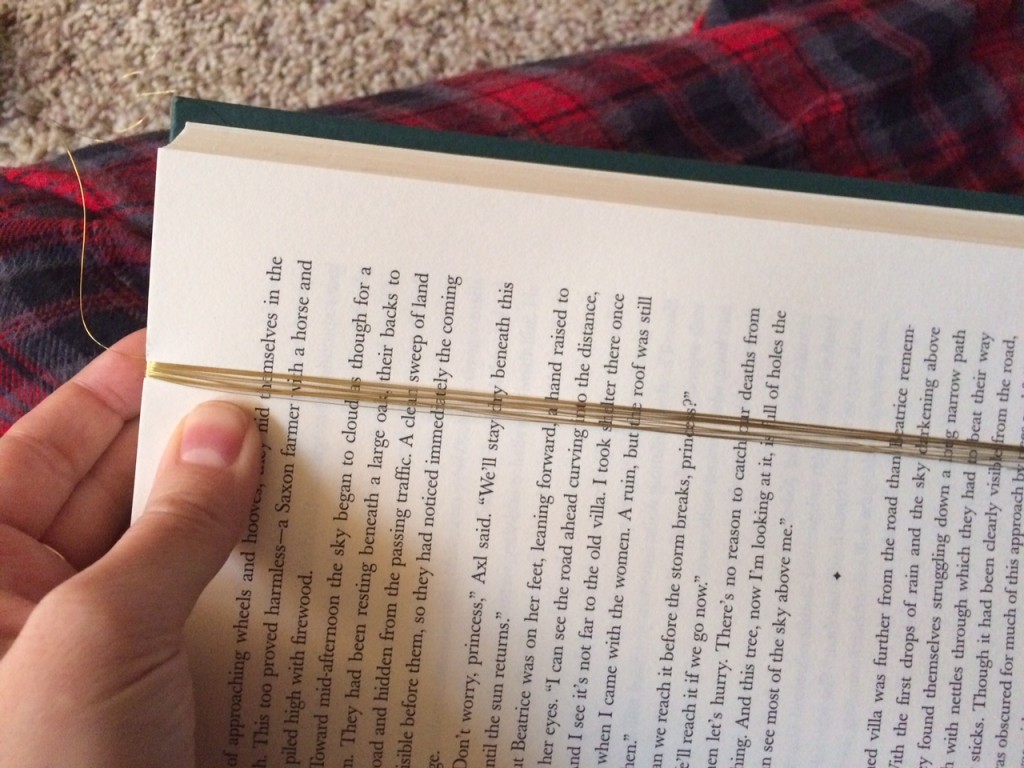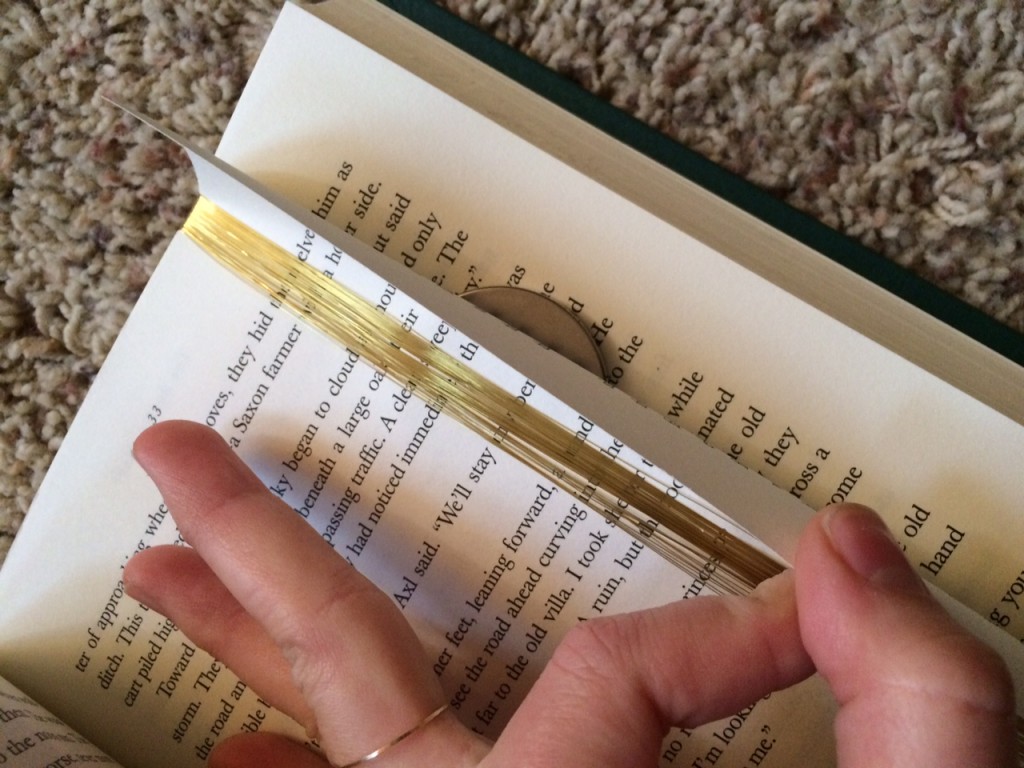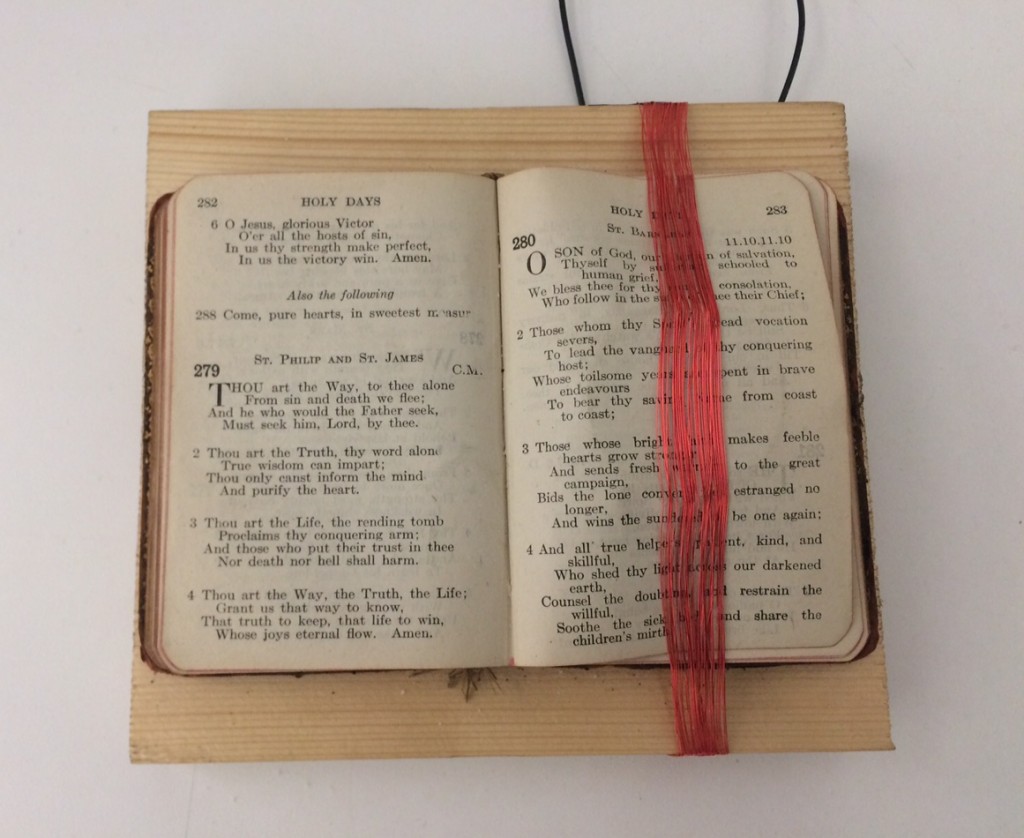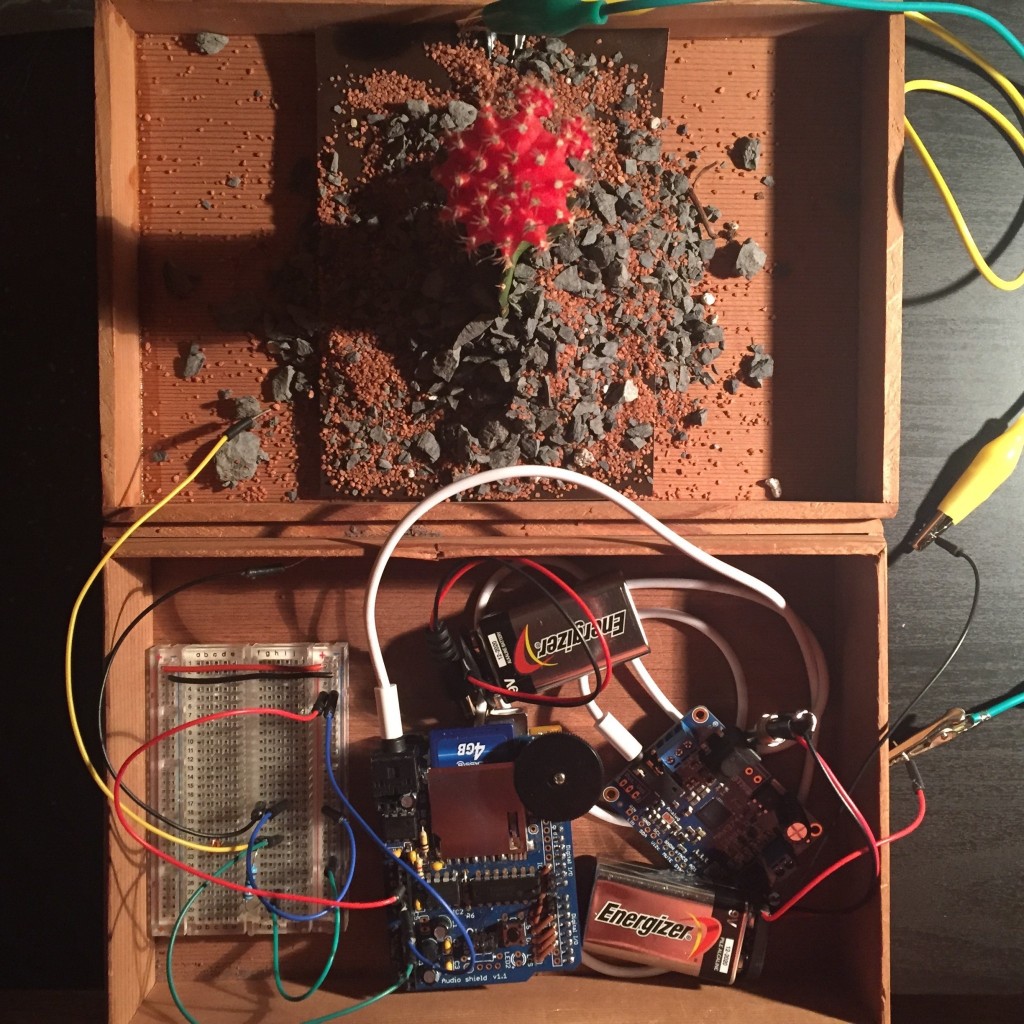Thanks for a wonderful class this semester! Here is the collection of all of your final projects on Instructables.
[Week 1] Project Critique
A project I really enjoyed is the line of Sound Reactive dresses by Rainbow (Amy) Winters. She made two pieces, one that responds with nature like animations and another that animates more fractal shapes that she refers to as the “Picasso explosion.”


These dresses animate differently based off incoming sound, and I find the whole idea of reactive clothing like this fascinating. I am definitely not a huge fashion nerd, and my general getup is jeans and a t-shirt, but I am a science nerd, so the underlying tech of these pieces really fascinates me. I am also a sucker for anything geometry related so the Picasso dress really grabbed my attention. The dresses are made up of neoprene tubes, electroluminescent panels, as well as mirrors to blast out the colors and animations to the outside world.
[Week 5] Reflection
How I identify Myself:
The three classifications I feel most attuned to are coder, learner, hacker. I definitely used to identify with gamer, but as I’ve gotten older I find myself playing less and less games. In my younger days though boy was I a voracious consumer of video games, much to my parents chagrin.
I identify as a hacker in that I am great at pulling together things I’ve found that fit a project I am working on and slicing them up and retooling the bits to fit my need. I definitely don’t see myself as a hacker in the traditional sense of trying to break into computer systems, but rather the hacking I refer to is modifying and changing some basic bit of code of base project, and building off that to save myself the time of starting at ground zero. I feel this has suited my nicely as it’s allowed me to get more done for my coding projects since I can skip a few preliminary steps! This has been particularly helpful when coding animations as 99% of the time something similar has been done, so it saves quite a bit of time looking at the structure of those projects and then carving it up to suit my needs.
I classify myself as a learner because I am a voracious learner. Learning a new skill has always been something that engrosses me. I absolutely love diving into a new area, especially one that involves making something. This has served me greatly as I have taken journey that is learning how to code. With coding there is such a mammoth amount of different things to learn in the subject that I am never bored! The one downside to my appetite for learning new things is that I don’t always stay on one subject to truly master it, rather I have moved onto the newer and more exciting topic to learn.
Lastly I classify myself as a coder. It has been a rather long winded journey to get to the point where I consider myself a coder. My first coding class was in undergrad, and it was about as stale of a class as one could imagine. This severely turned me off from programming as my teacher made it more dull than doing microsoft excel all day. Flash forward several years when I was working with microsoft excel all day, hating life, I remember starkly thinking “man I wish I learned how to code.” My boss at the time turned me onto codeacademy, and away I went with igniting my passion for code. This really came to a head when I met my fiance Alex Samuel, who was plugging away in her first year at DT fresh out of the fashion world. She was doing really cool projects with both physical computing and software coding, while I was counting the hours in a day at my boring job. She hammered the fact that she had no coding background before entering the program, into my head and it really gave me the confidence to apply to DT. Flash forward a year an a half later and I am coding away, enjoying every moment of it. When I first entered DT I was big into pcomp, but as the year went on I got more and more into coding, especially openFrameworks. Now most of my projects are strictly code based, and I really enjoy the act of digitally creating art with the simple logic structures that make up software coding languages.
Favorite Tool:
My favorite physical tool is (this may sound weird) a pair of scissors. With scissors I can shape a whole wide range of objects to suit my needs, from pcomp wires, thin tubing (with strong scissors!), to construction paper and cardboard. I love the ability to shape things to my exact needs on demand, and scissors are usually the best tool for this. When I got my newest phone I found that it required a smaller version of a sim card. Instead of going to the store right away I looked up a DIY way to trim down your old sim card and away I went. With meticulous and small increment cutting, I slimmed down my old sim card to fit my new phone. It turned out that the chip itself was not compatible with my new phone so it was all for not, but the act of modifying the old chip to perfectly fit my new phone was an enjoyable one so the time was not wasted. I thoroughly enjoy being able to mold things on my own and to my needs without having to purchase a specific object, and scissors are an incredibly useful tool for doing this.
Favorite Craft:
I thoroughly enjoyed learning how to needle felt from Sarah. It seemed like such a silly endeavor at first, and one that I thought couldn’t possible make little objects like in the picture, but I was quite amazed when after many minutes poking away at this ball of cotton fuzz, substantial objects soon formed. After this I began to find myself with wads of this felt in my bag as I constantly made little goofy items with it. It definitely was a painful learning process as many a time the needle would enter my finger instead of the felt and boy are those little suckers sharp as all hell. After quite a bit of trial and error my stabbing became more precise and the amount of blood drawn began to diminish. If I could do something differently when learning this craft, it would definitely be to have taken it slower. Rushing these little felt objects is a quick way to finger pain as the material is so loose at first you have to really squeeze it together with your fingers. This causes the area to stab to be rather small between your fingers so if you are careless you’ll often find yourself needling your fingers. Now in practice I don’t know how careful I would be if I got to do it over as I am a rather impatient person and one who likes to bull rush his way through new fields, so most likely I would have ended up with the same amount of scabs on my fingers even if I had the forewarning of the pain to come
[Midterm] Children’s Lightbox
Concept:
A Society of Light:
400 years into the future, man has survived many hardships. The greatest of which being climate change. After the great disaster of 2100, when the seas turned toxic, and the temperature turned extreme, humanity was reeling. Crops would barely grow, and countless died as society all but collapsed. The last holdouts knew that man had to change his approach as the caretaker of the planet, and had to learn from their mistakes. Casting off the yoke of personal greed and progress at all cost, humanity began to rebuild. Central to this was solar power. Never again were we to rely on toxic chemicals and compounds to power our societies, as the road that lead to was one we did not wish to revisit. But the leaders at this time knew how fickle and short-sighted we as humans could be so they devised a plan to keep solar power central to humanities core values. Thus began the pseudo cult of light.
Light was soon held almost akin to god. Light was the bringer of life, as without light, plants could not grow. Without plants we could not feed ourselves nor our animals. Light is the banisher of darkness, and with solar power man banished the toxic hell that had become the world at that time. As the decades turned to centuries, this love of light became more and more the central focus of human’s belief systems. Due to this, sunrise became a spiritual moment for most people. As the morning light banished the darkness, people could start their days and lead their lives. Humankind was for the first time, peaceful and happy. The cult of light had done much for the well being of humanity.
My project is a simple child’s possession that is common at the time. This little box is a small reminder that when there is light, all the evil and troubles recede while the good can flourish. When there is no light, the “evil” wolf is prowling about eyes a glow. However once the sun rises and bathes the box in light, the evil recedes and the peaceful deer can peek his head out without fear. It is important to ingrain the children with this love of light as any idea of returning to dirty sources of power then becomes almost akin to blasphemy. This way as the memory of the tumultuous times of environmental strife fades further and further into distant history, man won’t be tempted to risk the health of the world for a quick an easy profit
Project:
This project was made with construction paper, notecards, servos, led’s, a photocell and arduino!
I started out by designing the shapes I wished to use on notecards to provide some stability for the construction paper. I then glued the notecard shapes to the construction paper and cut away the excess paper
I then wrapped the box I was using to serve as the base with green construction paper and cut out the slots where wires and hardware would poke through.
Next I poked holes in my animal shapes to serve as the eyes. I then pushed led’s through these holes and then connected wires to the back of these led’s to run down to my power source.
Now it was onto my wiring. I pushed a photocell down in the front of the box to capture the light amount and feed the data to my arduino. I then hooked my wolf character up to a servo using paperclips. Lastly I wired all of this to my arduino and through many annoying attempts, was able to shimmy all of this into the box without any of the connections breaking.
With everything in place I then turned it on! I used a 9 volt batter to power the project that way I was not reliant on an ugly cord sticking out the back (although in the future the people would use a solar powered rechargeable battery!). The box moves the wolf out of his hiding place and turns his eyes on when there is minimal light hitting the photosensor. However when there is ample light hitting the photosensor the wolf retreats down behind the bush and the deer’s eyes begin to light up.
Final Project Documentation + Instructables
I was very inspired after our final presentation, and decided to re-make my headphones based on the wonderful critique I received. The new design uses the fabric of the headband as the foundation of the speaker to create a more integrated design. I also made the coil a visual focal point by exposing it on the exterior of the headband.
Here are the links to my original post & updated Instructables
Final Process Documentation:
Cihang’s final project internal organs
Memory Design Speculative Project
Speculative memory design
Memory itself has become the determining factor of our existential satisfaction, yet at the same time the conditions of late modernity have dislodged ourselves from our physical and social environments.
In many ways this was a bargain struck for the purposes of material comfort and accumulation resulting from industrialization, and a reordering of society based upon production and consumption. This bargain was not without cost to individuals as this process of reordering required a set of separations – a disembedding. A separation of individuals from localized cultures but also within individuals of their physicality from time and space.
Technology is a disembedding condition, that acts to separate our bodies from time and space. The fact that one might project their image across the world, but also record it for another time. In its simplest sense the action being divorced from the body. We might also find that societies themselves suffer from a disembedding as social interactions become mediatized, virtualized and remote.
As we glue these pieces together the configurations seem uneasy as if there must be another way. A recreation of the traditional would be a mere simulation of what was, ill-fitting to our current material circumstances. Conversely a dive headlong into the myth of progre offered by modernity comes up short against the hollow offerings of consumerism and capitalism. And so we are left holding the pieces of ourselves, and the glue of our material capacities yet unable to create satisfying configurations.
While an inescapable condition in which we must construct a reality for ourselves, this cannot happen independently of the material world. To live in a reality of our own choosing in this way would produce a cognitive dissonance unbearable for most, or requiring of ever greater mental gymnastics to achieve internal consistency. By the other extreme, self identity cannot be a purely empirical proposition, as empiricism demonstrates what is predictively rather than that which could be. Self identity is imagination made quasi-real.
Mystical constructions of reality appeal to that with which modernity has failed to supply us. Mysticism is not a failure of knowledge, or an attempt to somehow know the unknowable but a deep desire to approach the material world as a sentient entity, that which could understand us. The horror of nature is its indifference towards us, and we project our sentience upon to remake it such that it should care for us.
While an understanding of an indifferent nature might not always seem horrific, it has always been unacceptable to regard it as such, for to do so would be to regard our own existence if it were to be meaningful as necessarily divorced from it.
An imagined future for an approach to memory would link the technological capacities for storage and of information with the human needs to structure this information within a self narrative and apply a symbolic meaning towards it. In traditional contexts this process has taken many forms, though broadly termed divination. A process by which a natural phenomena is “read” to approach the knowledge of past or future events.
The technological aspect of such a process could be used to guide an arrangements of objects by assigning them the capacity to store information and use it to augment self narrative.
Memory Capsule (Week 8)
For my memory project, I created a rectangular prism that represents both the act of remembering as well as the subconscious process of forgetting or fading memories.
Background:
Much of our current understanding of memory looks to the chemical or material processes and physical structures that make up what we think of as the abstract concept of a “memory”. Memories are very real, very material things – they are believed to be a series of connections between synapses that are strengthened and weakened over time based on how frequently these memories are accessed, or rather how often chemical neurotransmitters and electrical currents transmit across a unique pattern of synapses.
Synaptic plasticity allows for us to strengthen memories through the use and reuse of synapsis as learning continues, previous thoughts and concepts are associated with new ideas, and the past is remembered. This strengthening has a material basis, with proteins being built or modified to increase connection strength between synapses. In the case of memories, the old idea of “if you don’t use it, you lose it” is believed to be true: If a memory is not frequently attended to, strengthened, or associated with the present, it weakens. The mind has a finite amount of resources, and maintaining an infinite amount of information – treating the most mundane details of our lives as equally important as the moments that we most treasure – would be inefficient and exhausting. Thus, we “delete” old or unnecessary memories from our brain, giving priority to those thoughts and ideas to which we refer to most.
This is a brief overview of the idea behind my project – that there is an ephemeral, material component to memory, and this “memory-matter” degrades over time as we fail to attend to it.
The Prism:
The prism consists of a clear plexiglass container containing a glass jar, woven heating elements, a button, and a thin block of solid coconut oil. The heating elements are constantly being powered by a battery inside the container, warming the solidified coconut oil and causing it to melt and be collected by the funnel into the glass jar below. However, when the button is pressed by the user, the heating elements are turned off, and an LED within the container’s funnel begins to pulse. When the user releases the button, the heating resumes.
This circuit and user interaction is meant to mimic the process of attending to the synaptic connections that form our memories. So long as we continue to remember specific details, those details cannot be forgotten. And so long as we continue to push the button, the oil cannot melt.
Materials:
for the circuit
- LED
- TIP122
- 100k ohm resistor
- 100 ohm resistor
- button
- 9V battery
- Nitinol/high resistance wire (tested multiple materials, and nitinol/muscle wire works best)
- Arduino Uno
- Alligator clips
- wire / conductive thread
- Breadboard
- Thermochromic paint/pigment + paper (for swatch to test heating elements)
for the container
- 4″x4″x6″ clear plexiglass cannister
- 6oz. glass jar
- Perforated plastic / needlepoint plastic sheet (to sew heating elements into)
- Small plastic funnel
- Coconut oil (room temperature or refrigerated to make solid)
- Plastic dowels/straws (to keep things in place)
The Heat Circuit
To test the heat circuit that you’ll be making, it’s helpful to prepare a small swatch of thermochromic pigment (material that will change color as it heats up) mixed with a clear medium (I used Modge Podge).
The circuit diagram for the heat controller was found at the eTextile Summer Camp website. They’ve generously provided the following Fritzing diagram:
This was the same circuit used in this project. The following video shows the circuit in action heating up the thermochromic swatch that was previously prepared:
(read more for the code)
Winter Headband Lamp – ATTiny (Week 7)
I took a preexisting knit headband and added a capacitive touch sensor to the area that meets the forehead using copper fabric. That way, when someone wears the headband, an LED will turn on, creating a headlamp for running/walking in the park at night during the winter. When the headband is not being worn, a smaller, blue LED will pulse – this is the resting state of my lamp.
The above video shows the Arduino sketch running on a programmed ATTiny. The ATTiny controls two LEDs using a 3V battery and lights these LEDs based on capacitive touch input (the yellow wire that is touched in the video, which then becomes the copper fabric in the headband below). The “resting state” of the circuit/headband is a small, blue LED that pulses over time. When the input is received via the capacitive touch sensor/when the headband is worn, a second LED (10mm bright white) is lit, lighting the headlamp.
Materials:
- 1x ATtiny45
- 1x Arduino UNO (for programming the ATTiny)
- 1x 10uF capacitor
- 1x 10mm white LED
- 1x 5mm blue LED
- 1x 3V / coin cell battery
- 1x button
- 1x 330k ohm resistor
- 1x breadboard
- soldering iron, solder, conductive thread/wire, perfboard
The Circuit / Fritzing Diagram:
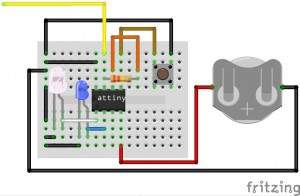
The yellow wire in this diagram connects to a piece of conductive material that – when touched – triggers programmed response (in this case, lights the white LED)
Final Project Process and Instructables
Soft Circuit Loteria Final Project Process and Instructables!
By Isabella Cruz-Chong and Sarah Page
For our main final project post, see this page.
Knitted Speaker in “El Alacran”
Process
Coiled Speaker in “La Pera”
Process
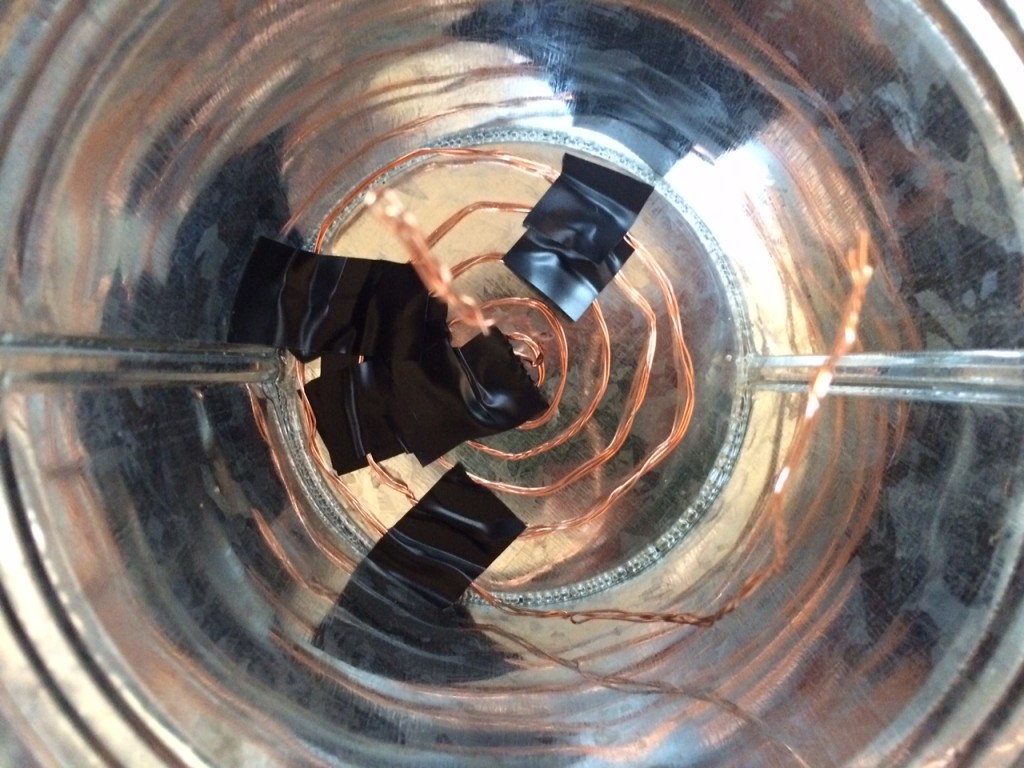
Copper Coil Speaker Instructable
Book Speaker in “El Músico”
Process
Capacitive Touch Sensor in “El Nopal”
Process
